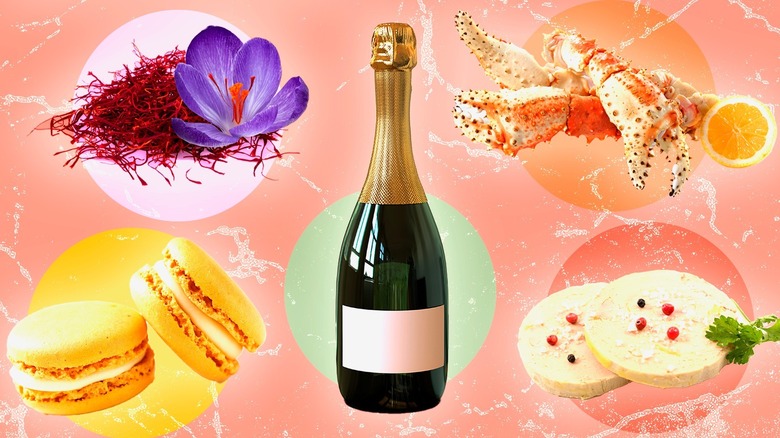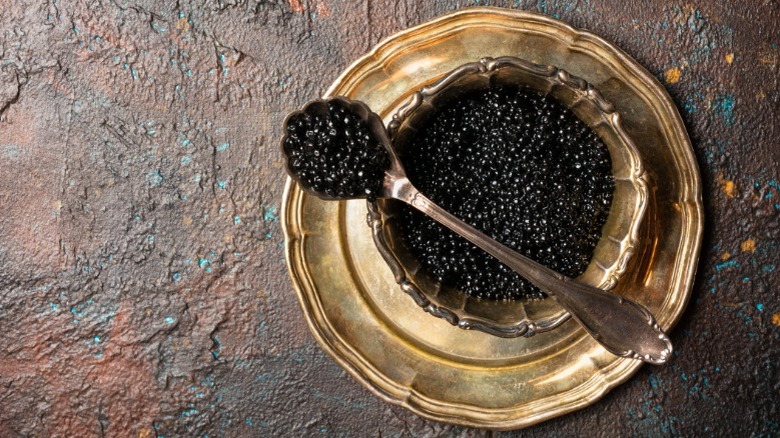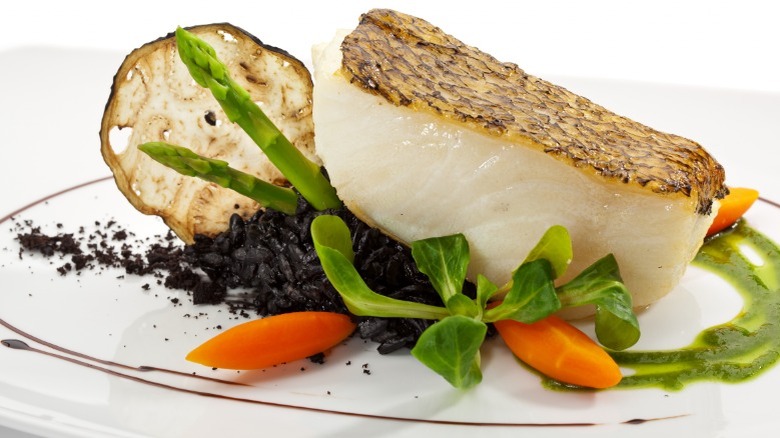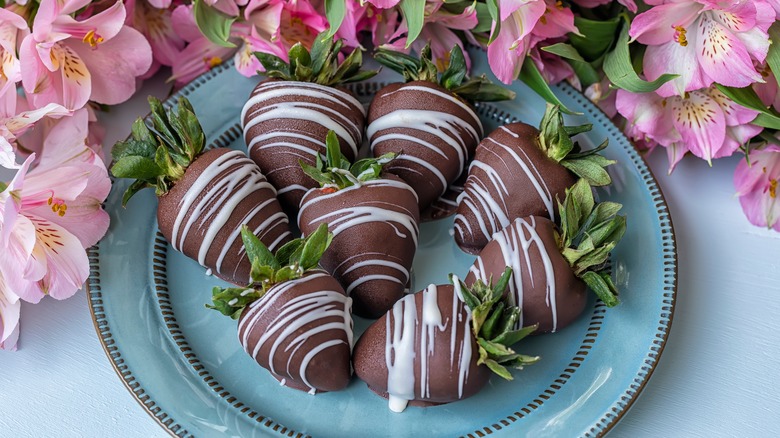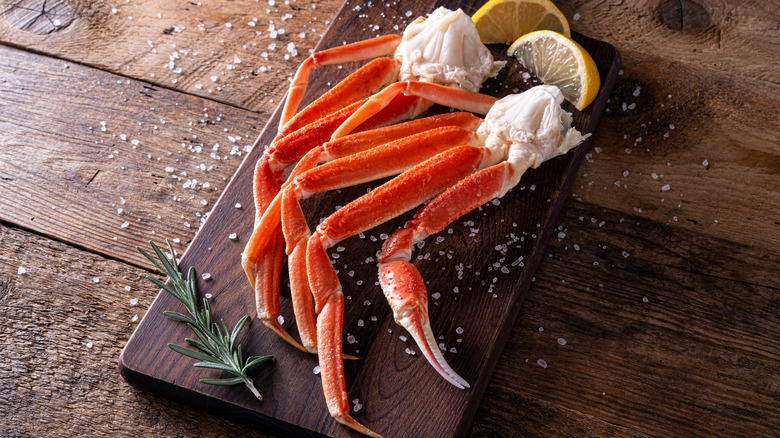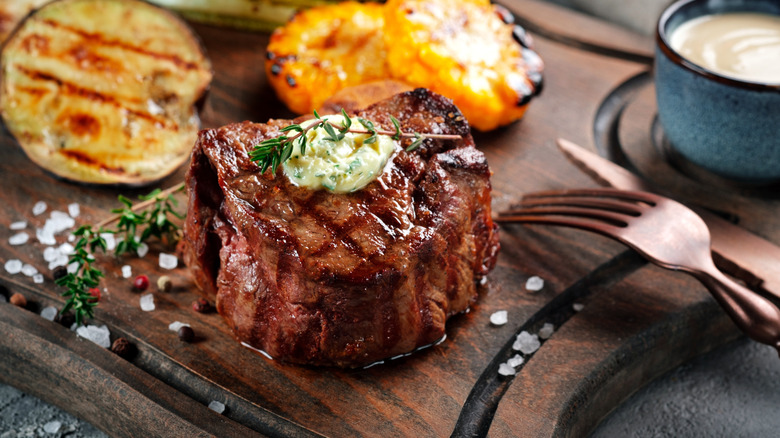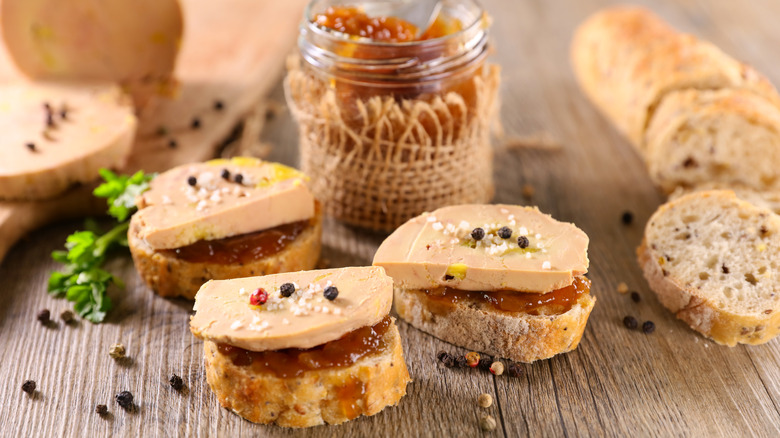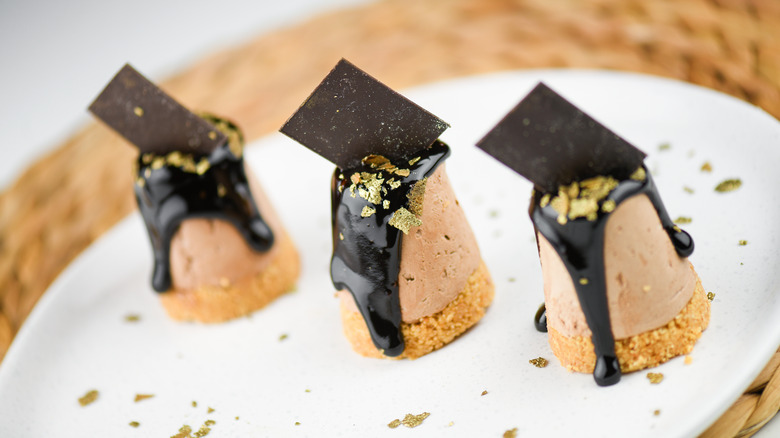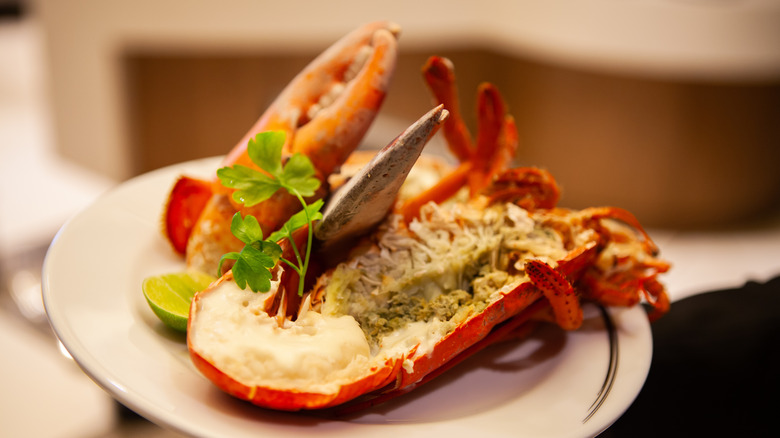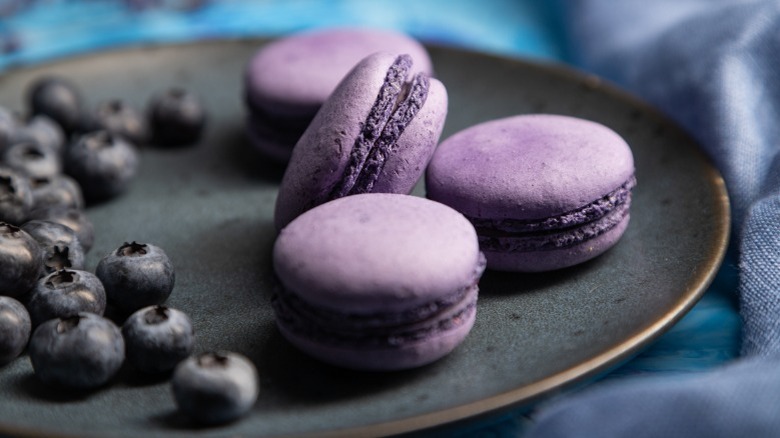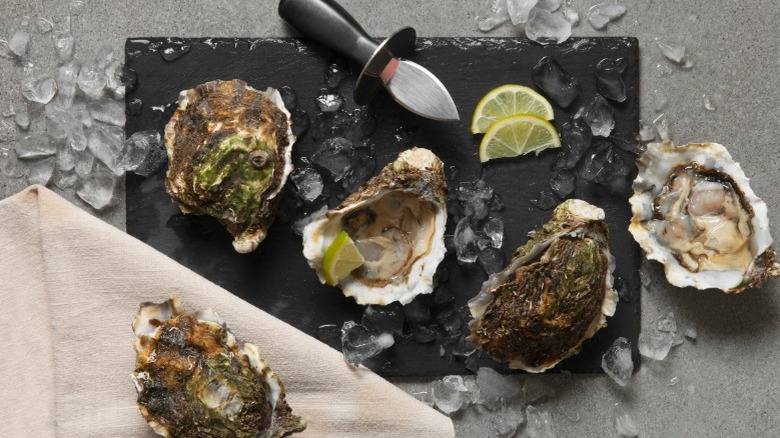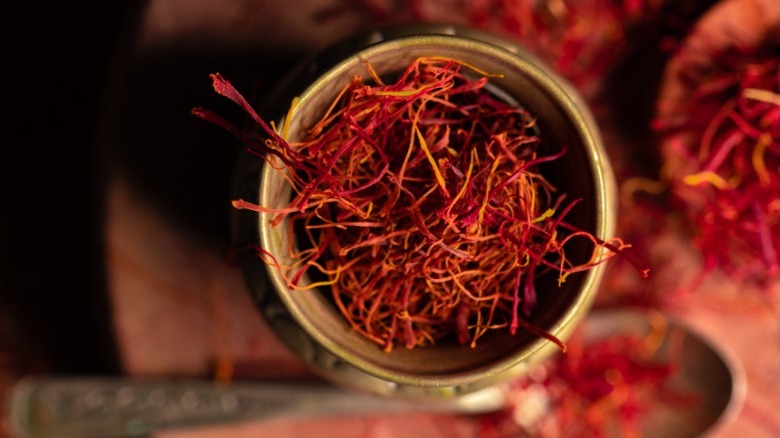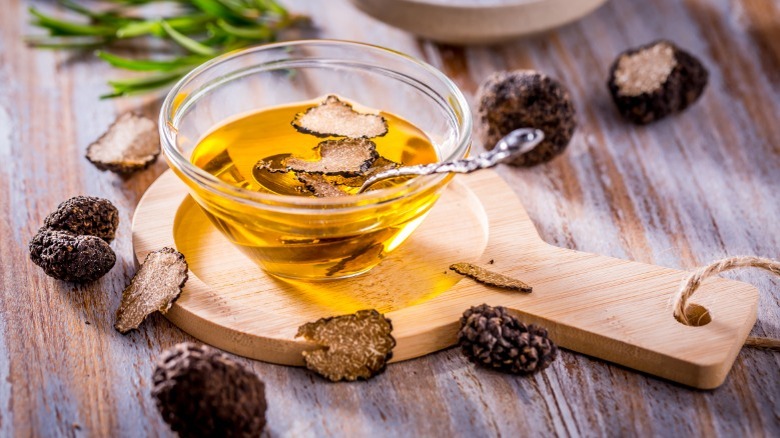15 Expensive Foods That Aren't Worth The Splurge
If you've ever read a menu and come across something that seemed exorbitantly expensive and wondered if it was worth it, we've been there. Too often, it seems like the addition of some trendy or overrated ingredient can easily jack up the price, seemingly for no good reason. Often, that reason is simple supply and demand. When lots of people start clamoring for something, it sets off a chain reaction that can sometimes make something so-so into the next big thing.
That's not to say that we don't love food trends; we're seriously into tasting anything new and upcoming. Honestly, that's why we got into this job in the first place. But there's a big difference between eating something because you truly love it and ordering it because everyone else seems to love it. Read on to see what might be some of the most overrated splurge items. You'll thank us the next time you read a menu and realize that you don't have to impress anyone by ordering truffle fries.
Caviar
Caviar is an acquired taste. If you're squeamish, you might not even be curious about how it tastes, even if some people love it. Like Champagne, it's one of those things that we all think of as expensive luxury foods, and both are defined by those tiny bubbles. For caviar, those bubbles are the heavily salted, unfertilized roe of sturgeon. While other fish eggs can be harvested, like the roe used in sushi, only sturgeon eggs are considered authentic caviar. There are multiple types of sturgeon, so there's also a vast array of roe across various price points.
That large price difference can be confusing and, unfortunately, isn't always an indicator of quality. If you've always wanted to try caviar but have been put off by the expense, the good news is that you can find decent stuff for a decent price, if you do your research. Farmed caviar will be less expensive, but be aware that it will be lacking the robust taste of wild roe, and even farmed versions will cost you at least $100 an ounce. Instead of splashing out for a can, our advice is getting invited to better parties.
Champagne
If you're a fan of bubbly, you might have already branched out into some of the other varieties available. But if you've always thought it was out of your snack bracket, you might be in for a sweet surprise because Champagne isn't the only sparkling game in town. Produced in only one area in the world, the Champagne region in France, this indulgent beverage has come to symbolize the good life. But unless you're a true connoisseur of wine, then you might not even be able to tell the difference between it and something that comes from the next region over.
Champagne is made with very specific grapes and involves a long, technical production process that helps to drive up the price. But here's the thing ... crémant is made with the same process, although not the same grapes, in many regions across France. Like champers, it also comes in both white and rosé varieties, as well as ranging from dry to quite sweet. And while it might not be quite as aggressively bubbly as the gold standard, it's also about half the price.
Chilean sea bass
In the 1990s, food culture became globally inspired, but consumers still weren't ready for anything too wild. Because of that, the Patagonian toothfish was renamed something that was both familiar and just exotic enough to pique shopper's interest, and the Chilean sea bass was born. What started out as a relatively unknown fish is now considered a high-end protein served in upscale restaurants. But how did Chilean sea bass get so expensive?
Like so many other things, the answer is supply and demand. Fishing for Chilean sea bass is labor- and time-intensive because fisheries are located far from shore and the fish are really slow to mature, meaning that it can take a long time for a school to regenerate stock. Many people and restaurants clamoring for tasty fish that are difficult to procure only drives the price up. Demand for the fish fell for a time but has begun to rebound since 2010, with the price beginning to climb again over the last decade and will likely reach peak price again. While it was previously adored for its buttery flavor and flakiness, some customers are looking for less expensive and more sustainable options.
Chocolate-covered strawberries
How did chocolate-covered strawberries come to signify love and opulence all at once? Like the ubiquitous red roses, few things shout romance like a tiny box of berries. Don't get us wrong — the combination of ripe red berries and the snap of chocolate does make our hearts sing, even if we're not sure why. Aside from the deliciousness, obviously. It's possible that we're just paying for the suggestion of a good time. Much like oysters, chocolate-dipped strawberries have a certain reputation for being best enjoyed with a partner.
But that can't be all there is to it, surely? When they're handmade with the lushest berries and the highest-quality chocolate, they're usually worth what you're paying for them. Scoring the last box at the 24-hour gas station minutes before you're due at dinner, however, isn't going to get you the best deal. If you're truly in love (with food or with your partner, either one works), why not whip out your apron and mix up a batch yourself? Try a combination of dark and white chocolate to see what you like best and score some extra romance points while you're at it.
Crab legs
Hangry? Do yourself a favor and don't order the crab legs. If you think that you're just going to start slurping down delicious crab meat until you've had your fill, you'd be sadly mistaken. This particular delicacy makes our list because of all the work involved for such a measly end result. A giant platter of crab legs might look like a ton of food, but once you've cracked and squeezed and sucked out the tiny morsels of meat, you might wonder why you didn't order the clam chowder instead.
Crabs might be plentiful and affordable for people living in coastal regions, but if you're landlocked, you'll likely be paying a lot for the pleasure of dismantling your own dinner. While some diners relish the challenge and are fine with the large work-to-reward ratio, we'd advise you to skip the crab legs if that's not your modus operandi. Enjoy the taste of these crustaceans by ordering something already prepared to avoid breaking a sweat and then mistakenly chomping down on a shard of the armor-like shell.
Filet mignon
Before we dive in, let us explain what filet mignon actually is. If you've had it, you'll know that it's a superbly tender and juicy little round of beef. Cut from the small end of the tenderloin, the filet is known for being melt-in-your-mouth decadence, often topped with a buttery sauce for the ultimate red meat luxury. An expensive cut that produces a fairly small serving ("mignon" means "cute" in French), you may wonder if there are better options when you're looking for a piece of beef that will still make you feel like royalty.
Aside from the small size and high price, the biggest problem with filet mignon is that there isn't much "beefy" taste — hence the addition of highly flavored butter. If you're going to eat red meat, you might as well be able to taste it, right? The tenderness comes from the fact that the filet is cut from a part of the cow that doesn't get used much, which contributes to flavor. Try a less expensive piece of beef, like a ribeye with good marbling.
Foie gras
A perfect example of something cheap and plentiful being turned into a desirable commodity, foie gras is thought of as an extravagant food, in more ways than one. Though many producers have moved away from the old-school methods of force-feeding their geese and ducks and onto more humane practices of raising foie gras, it still retains a reputation that makes consumers uncomfortable. The combination of questionable animal welfare practices and the high price leaves us feeling that foie gras is another overrated food that we can do without.
In a New York Times op-ed piece, Mark Bittman calls foie gras one of the most accessible of all the high-priced food that appeals to wealthy food snobs. Compared to some of the other entries on this list, you can splash out for a taste of the fancy liver spread without breaking the bank. Bittman goes on to say that it has become a food that's important only to those seeking to impress or be impressed. The intensive labor and higher-than-average feed cost that goes into rearing these geese quickly turn inexpensive organ meat into an expensive and sought-after delicacy.
Fondant-covered cakes
While we would never disparage the hours of work that go into creating a cake that looks exactly like a Chanel handbag completely ensconced in quilted fondant, it does raise the question of what's happened to icing that tastes like icing? You know the stuff we mean — the good stuff. Fluffy icing that's full of sugar, butter, and maybe some cream just for good measure. Making a showstopping cake is a talent, definitely, but then to undo all that tasty work by covering it with loads of rolled fondant just for the aesthetic seems like sugar-induced lunacy.
Not only does fondant not taste very good, but it's also not even easy to use. While it might look like Playdough, it's awfully finicky and will often crack and shrivel before you know it. But wait ... some bakers firmly believe that you should go ahead and use all the fondant you want because, get this, it's not meant to be eaten anyway. Apparently, we're supposed to be peeling the fondant off our fantastically decorated cakes and eating the delicious insides, enjoying the best of both worlds.
Gold flakes
This one seems like it doesn't need an explanation, yet here we are. Adding gold flakes to food has been a trick of high-end restaurants for some time, and it doesn't seem to be going away anytime soon. As far back as ancient Egypt, the wealthy were using gold for spiritual reasons — also, they probably thought it was the ultimate power garnish. And since then, luxury has been defined by what we now call conspicuous consumption. How else would you describe using something that is both devoid of flavor and incredibly expensive as a way to make people pay $1,000 for one order of chicken wings?
A quick search online reveals that nearly anything that can be ingested has been wrapped, sprinkled, or dipped in gold, including grilled cheese sandwiches, sushi, popcorn, bagels, burgers, and an entire leg of Iberico ham. For the extravagant home chef, vials of edible gold flakes are available, ready to be unleashed on whatever could use a little bit of fancying up without the hefty price tag. But if there's no one to see you eat it, does it even count?
Lobster
During colonization, lobster was so plentiful on the east coast that it was considered worthless and used only as food for servants, the poor, and pigs. Eventually, however, the colonists figured out how to keep it fresh and began shipping it to Europe where people went nuts for it. Later, when the railways started making travel across the country easier, lobster found its way inland, and a new luxury food was born. Sending live seafood across the country to people who had never even heard of crustaceans made the prices soar and drove up the demand. This demand led to overfishing, which drove prices up further.
Today, due to conservation efforts and international tariffs, lobster isn't as rarified as it once was, but that doesn't keep it from being considered a luxury people are willing to splurge on. Like a crab, lobster can be a pain to wrestle with, but the reward here is greater. Lobsters are sweeter and less fishy than most other shellfish, especially the tails. But let's be honest here — they're a lot of expensive work for something that's essentially just a way to deliver some warm butter into your belly.
Macarons
These colorful meringue cookies were suddenly everywhere by mid-2014, quickly becoming the new "it dessert" when consumers were no longer cupcake-crazy. After our collective binge on those sugary handheld cakes, replacing mountains of frosting and sprinkles with airy, gluten-free biscuits and a thin layer of icing only made sense. Couple that with the macaron's utterly photogenic elegance and there's no way that anyone could resist. Nearly a decade later, however, our survey of overrated desserts placed macarons in the top place, by 34% of respondents.
Depending on where you're getting your lovely little bites, you're probably paying upwards of $2.50 per cookie and might not be getting the quality you deserve. There's a good reason why they're desirable — macarons are hard to bake but can be quite extraordinary when done well. Make sure you're supporting a reputable bakery the next time you're in the market for a lovely French treat, instead of handing over fistfuls of cash for something made without care.
Oysters
Oysters are another food that can be a hard sell, especially raw (because raw means live). Like lobsters, the bivalves were once so plentiful that they weren't anything special and were even given out as free bar snacks in coastal cities. In the past 200 years, things have changed enough that supply and demand have made oysters a luxe commodity. Those changes included pollution and disease in our waterways, rising populations causing overfishing, and 20th-century child-labor laws that took away a large portion of cheap labor.
Oysters, whether farmed or wild, take a long time to mature (up to two years in some cases), and all that waiting increases production costs. On top of that, once removed from their sandy beds, oysters only have a little over a week's shelf life, making them difficult to transport safely and economically. Fortunately, the price and availability of oysters can depend on a few factors, so if you're just dying to crack open a few, you have options. Oysters range in price from the $1 "happy hour special" to the $100-per-shell Australian Coffin Bay beauties, the most expensive oyster in the world.
Saffron
Unless you're a pretty adventurous home cook or hail from a region where saffron is used, you might not even be familiar with this gorgeous spice. Saffron has been used for centuries as a spice in risotto, biryani, paella, and jalebi, among many others. Most of the world's saffron is grown in the region between Spain and Kashmir, with Iran producing the majority of it, making it popular in dishes from that area. Part of what causes so much consternation over saffron is its subtle taste, especially when used in ingredient-heavy dishes. While it imparts a luminous color to your meal, the flavor is easily overwhelmed.
Saffron comes from a small purple crocus; the spice itself is the red thread-like stigma found in the center of the bloom. With each plant only producing up to four flowers a year, each containing only three stigmas, it takes a lot of flowers to produce a decent amount of saffron. The plants all bloom within the same week of the year and must be harvested by hand — in the early morning, no less. Fetching over $10,000 a kilogram (about 150,000 flowers worth), it is the world's most expensive spice.
Stacked milkshakes
Also known as "freak shakes", these sugar-loaded and fat-filled concoctions seem designed to be posted on social media rather than consumed. Towering combinations of marshmallow fluff, donuts, candy, chocolate chunks, and anything else your heart could desire all served on top of a rapidly melting milkshake, these monstrosities seem like little more than expensive messes waiting to happen.
Patissez, a small cafe in Canberra, Australia, claims to have introduced the first mega-stacked milkshake in July 2015. Posting an image of the first four trial creations on social media, cafe owner Anna Petridis saw daily shake orders go from 20 to 200 overnight. The whole concept got so big so fast that she immediately sought to buy the rights to the moniker "freak shake" to differentiate her creation from the others that quickly followed. An instant hit on social media, this combination of beverage and dessert doesn't always look all that appealing, to be honest. Loads of sticky sauce must be used to get everything to stay in place, and by the time you've done with your photo op, you're left with a drippy, soggy disaster.
Truffle oil
Truffles in general seem to have split cooks, eaters, and critics into two distinct camps — those who adore the funky fungi and those who just think they're a waste of time. While fresh truffles are considered by many to be a delicious treat, some people feel that their cachet comes not from their taste but rather from scarcity and cost. To bring truffles to the masses, infused products like oils, salts, and hot sauces were introduced to the market so we could all experience that divinely musty, earthy delight.
These products are still pretty costly and, much to our chagrin, rarely even contain actual truffles; the oil being particularly problematic in this regard. Generally speaking, you're most likely getting subpar olive oil with a chemical compound added — one that mimics the smell of truffles but doesn't have the nuances of the famous fungus. On top of that, critics and eaters alike have lamented that truffle oil is overused by restaurants, being drizzled on everything from salmon to baskets of fries.
